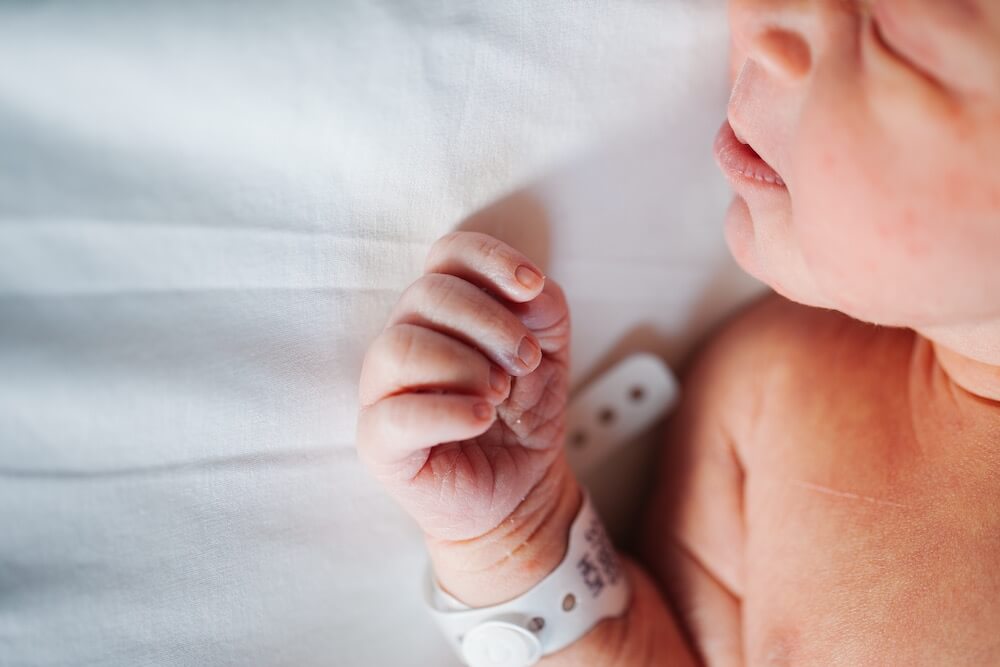Key Points:
- Sudden Infant Death Syndrome (SIDS) is the leading cause of death for babies in the US between 1 and 12 months old and it is unpredictable and without a clear cause.
- To reduce the risk of SIDS, the American Academy of Pediatrics (AAP) recommends placing babies on their backs on a firm and empty mattress, breastfeeding, keeping babies in the same room as parents without sharing the same bed, avoiding cigarette smoke, using pacifiers, immunizing babies, and not overheating them.
- Products marketed as reducing the risk of SIDS, and giving honey to babies under 1 year old should be avoided.
- After around 6 months of age, babies have more physical control over their body that can help them change position and alert them about breathing dangers, reducing the risk of SIDS.
SIDS (Sudden Infant Death Syndrome) –a parent’s worst nightmare– is the leading cause of death for babies between 1 and 12 months old in the United States. It’s not a disease or a virus but a diagnosis given when there is no apparent cause for the sudden death of a child under one.
As the name implies, it is sudden and comes without warning. A seemingly healthy baby can suddenly succumb to SIDS. Even with years of research, it still remains unpredictable. It is the uncertainty and the lack of answers what make it so scary for parents. But before the nighttime worry keeps you from sleeping, know that there are things you can do to reduce your baby’s risk of Sudden Infant Death Syndrome.
10 recommendations to reduce risk of SIDS
According to the American Academy of Pediatrics (AAP), these recommendations have been tied to a 50% decrease of cases in the United States:
1. Your baby should sleep on their back
This is vital and must happen every time. If you are concerned about choking, know it is very rare. Healthy babies tend to swallow or cough up fluids automatically. However, if your baby suffers from chronic gastrointestinal reflux or an upper airway malformation, talk to your doctor about the best sleeping position for your baby. Once your baby can roll over, which happens around 6 months, let them choose their sleeping position.
2. Your baby should sleep on a firm bed, with no toys or bedding
Always lay your baby on a firm mattress and avoid any pillows, quilts, bumper pads, or stuffed toys. These items can hinder your baby’s breathing.
3. Keep your baby away from cigarette smoke
This also goes for women who are pregnant. Smoking while pregnant has been shown to increase the risk of SIDS.
4. Have your baby sleep in a crib, but in the same room you sleep in
Your baby can be in your bed for comfort and nursing, but when they are ready to sleep, you should place them in their crib close by.
5. Breastfeed as much and as long as you can
Studies have shown that breastfeeding can help reduce the risk of sudden death, specifically due to its protective agents that fight off respiratory and gastrointestinal infections (common contributors to SIDS).
6. Immunize your baby
Recent evidence suggests that babies who receive their vaccines have a 50% lower risk of SIDS.
7. Consider using a pacifier at nap or bedtime during the first year
Using a pacifier decreases SIDS risk. However, it’s not necessary to take it to an extreme: if your baby’s pacifier falls out of their mouth after they fall asleep, you don’t have to put it back in. If you are currently breastfeeding, wait until your baby is one month old so you have time to establish an effective routine before you use a pacifier.
8. Don’t let your baby get too hot
The room should be at a comfortable temperature, not too warm and not too cold. Make sure you dress your child in no more than one layer of clothing!
9. Do NOT use products that claim to reduce the risk of SIDS
Products such as sleep positioners, special mattresses, and sleep surfaces have not been shown to reduce the risk of this syndrome.
10. Don’t give honey to babies under 1 year old
Honey can lead to botulism, which can be deadly in itself, but it also contains bacteria that have been related to SIDS.
Although researchers still don’t know the exact reason why the risk of Sudden Infant Death Syndrome is reduced after 6 months of age, it may be related to the baby’s physical development; more specifically, to the baby’s respiratory control, metabolism, sleep patterns, and physical skills.
In fact, by the time your baby can roll over, which happens when they are around 6 months old, their brain will be mature enough to alert them about breathing dangers and, given that they have more physical control, they can rescue themselves from certain dangerous sleeping positions.
As can be seen, one of the best weapons against SIDS is for your baby to have control over their body and be able to roll from one side to the other. If your baby has the physical strength to change position, the possibility of them not being able to breathe diminishes greatly.








